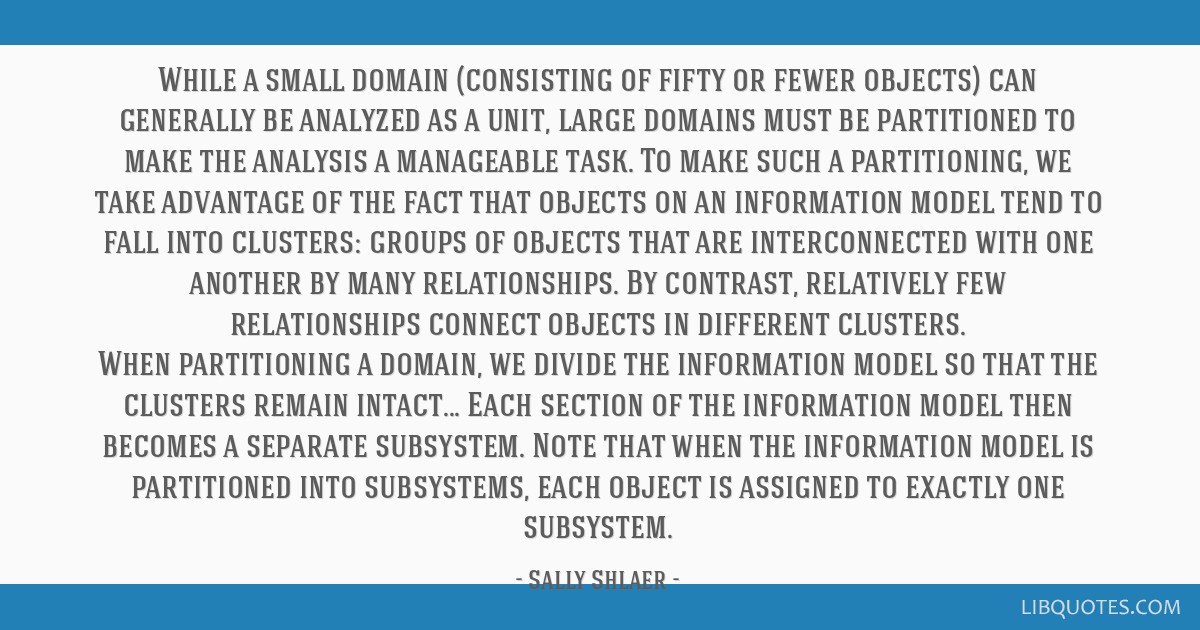While a small domain (consisting of fifty or fewer objects) can generally be analyzed as a unit, large domains must be partitioned to make the analysis a manageable task. To make such a partitioning, we take advantage of the fact that objects on an information model tend to fall into clusters: groups of objects that are interconnected with one another by many relationships. By contrast, relatively few relationships connect objects in different clusters.
When partitioning a domain, we divide the information model so that the clusters remain intact... Each section of the information model then becomes a separate subsystem. Note that when the information model is partitioned into subsystems, each object is assigned to exactly one subsystem.
p. 145; as cited in: The Object Agency, Inc. (1995) "A Comparison of Object-Oriented Development Methodologies" - Object-Oriented Systems Analysis: Modeling the World In Data (1988)





















